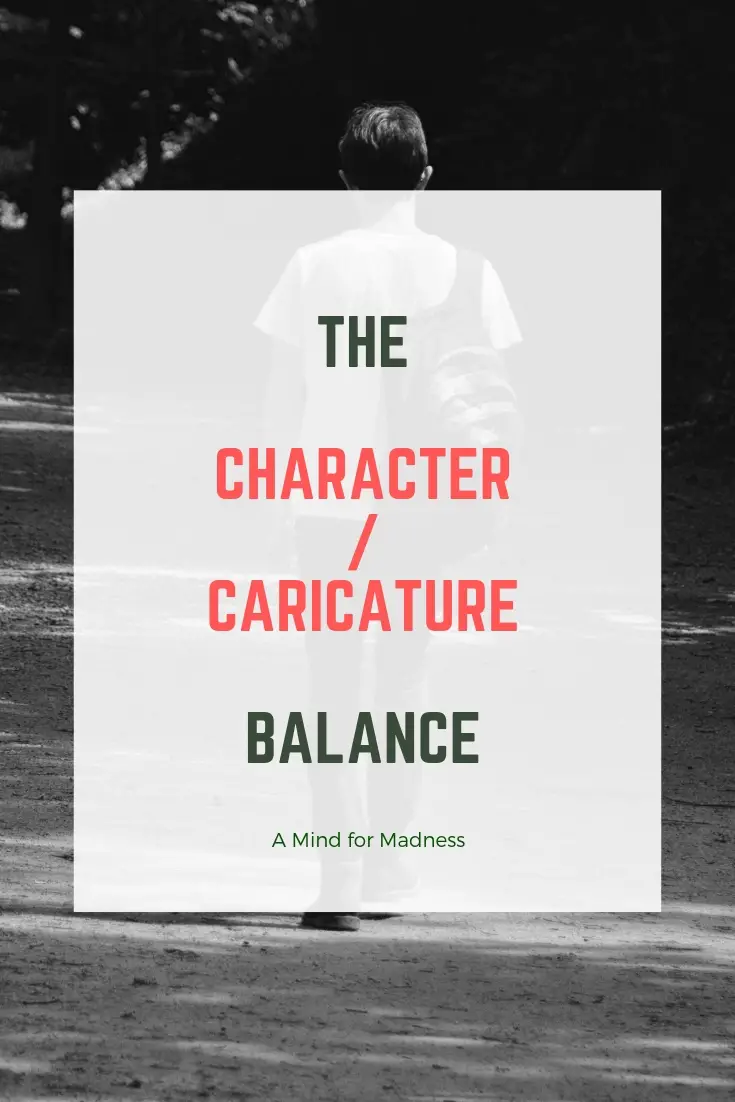Do you know the difference between character and caricature in writing?
Caricatures exaggerated a single noticeable feature. This weakens the overall character.
Let’s examine this in more depth in this article.
My History with Characterization
One of the most important things we can do as writers is to acknowledge our weaknesses and then work on them. Too often we get comfortable with “our thing” and then try to hide our weaknesses by going all-in on our strength.
I’ve spent an enormous amount of time over the past five years really studying and working on prose style and story structure.
I write a book according to something like the Story Grid method. Then I see what works and what doesn’t for me, and then move on to another technique like John Truby‘s method.
Iterating this process a dozen times has brought me a rich understanding of structure.
There’s no doubt that characterization is my weakest point.
Character Realism
I’ve had a philosophy for a long time that characters should be “real.”
This means my characters often act in contradictory or paradoxical ways. They have subtle and complicated reasons for doing things that only come out in subtext.
You might be thinking: wow, that sounds great!
But then you actually read it and every character sounds the same and has no interesting characteristics. I tend to write an “everyman,” and they all sound boring and similar.
It’s not that they’re “one-dimensional,” as many reviewers might say. It’s that fiction shouldn’t have an ordinary main character. The whole point of telling a story is to get into the head of someone who isn’t ordinary.
Fully developed characters can be boring, and that does not make good literature.
But then there’s the opposite problem.

Caricature in Fantasy Writing
This is especially problematic in fantasy writing.
There is a general trend in fantasy to create caricatures instead of characters.
This means one feature is exaggerated to the point of becoming a one-dimensional defining feature. These flat characters can be boring and predictable as well.
Caricature Example
A novelist might settle on a few core concepts:
- The main character‘s defining trait is loyalty.
- The bad guy‘s defining trait is greed.
- The sidekick‘s trait is humor.
- Etc
I don’t have to tell you why this is a bad thing, because we’ve all read books that take this too far. It’s as boring as making every character an “everyman.”
But I will make an argument for how it can be good if done properly.
Finding the Character vs Caricature Balance
When writing caricatures, it is very clear how the character changes over the course of a novel.
Maybe one subplot has the cowardly character, and they have to learn to be braver. Their arc will culminate in a test of bravery, and yay, they succeed!
It’s exhilarating and emotional to read these things.
Another reason caricatures can be good is that they create very clear differences in stories with many characters.
It’s easy to keep track: that one’s the trickster, that one’s the nerdy one, etc.
Unfortunately, I see a bunch of positive reviews of books that take this too far with claims like “I loved the variety of characters.”
Or worse, that the characterization is great.
Caricatures can create an illusion of depth by keeping the motivations clear and consistent.
As I’ve started exaggerating certain traits of my characters toward the caricature breaking point, I’ve seen reviews get more and more positive on the characterization.
So, people obviously like this.
I’m still struggling with this balance.
It’s bad to have no defining traits because then the character will be boring and spastic.
It’s bad to be all caricature, even if you trick some of your audience.
So it’s a balance; one that’s far trickier than I initially thought.
The Backstory Method
So far, the best method I’ve come across is to have a fleshed-out backstory that is the cause of a character flaw.
The flaw gives the character a clear sense of growth as they learn to overcome the flaw.
Then, if you use the backstory to inform character actions, the character will have a consistent demeanor without being focused on a single trait.
This will allow the character to still have some unpredictable behavior, and since the backstory isn’t explicitly spelled out, it allows you to keep some of the motivation as subtext.
This balance brings out some of the positives of the caricature while maintaining the depth and richness of a true character.
Of course, the main thing I’ve learned over the years is that everyone seems to have a different method for everything.
What one person thinks is the only method could not work at all for another person. That’s why I’ll keep reading and exploring to find my own way. And so should you!
If you liked this, you might also like: 5 Tips for a Killer Persuasive Essay or Using Psychology Podcasts for Character Development.


